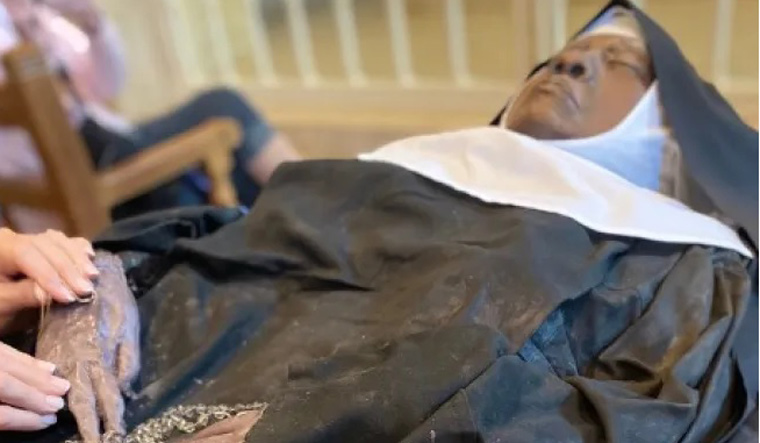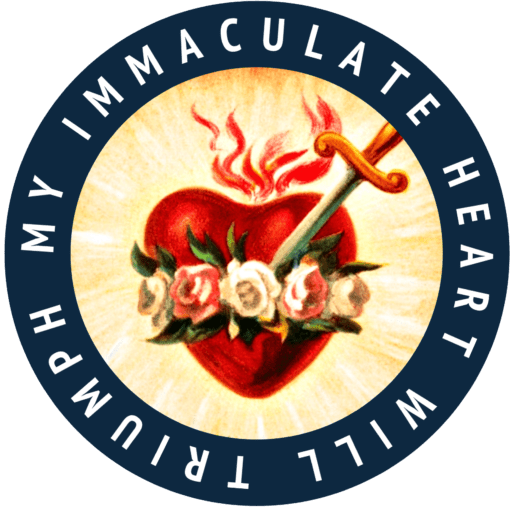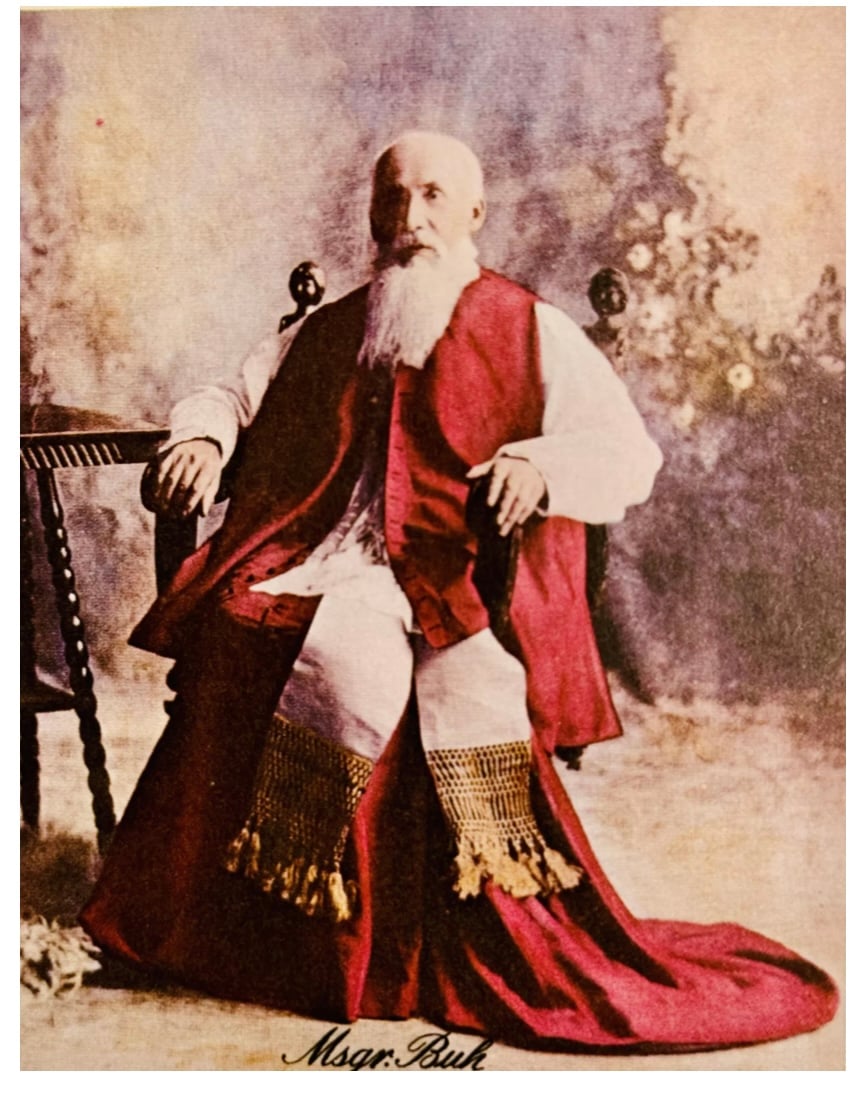
Tag: catholic blog
-

Reading This Will Stop You from Committing Sin! Sufferings of Hell, Revealed to a 20th Century Mystic!
Read More: Reading This Will Stop You from Committing Sin! Sufferings of Hell, Revealed to a 20th Century Mystic!Hell is a real place. But what is it like exactly? While the Bible gives us some clues, the 20th century mystic St. Faustina received a particularly vivid vision, which she recorded in her diary. Note that such “private revelations” are not on the same level of the divine revelation given by God in Jesus Christ.…
-

Pray this NOW! Act of Renunciation of Evil
Read More: Pray this NOW! Act of Renunciation of EvilI renounce, from this moment and for all eternity, the devil and all his works and pomps. I abhor all his suggestions and temptations. Suffer not, O Lord, this mortal enemy of my soul to have any power over me, either now or at my last hour. Let Thy holy Angels ever keep me and…
-

Ever Heard about Our Lady of the Rockies? This is the Story!
Read More: Ever Heard about Our Lady of the Rockies? This is the Story!Just ten miles away from Butte, Montana, and more than 3,500 feet above the surrounding valley, stands the image of Our Lady of the Rockies: a snowy-white statue that stands almost 90-ft (30 meters) tall. The image, which at first was supposed to be only five feet tall, ended up becoming the icon of an entire town.…
-

Miracles in Malta: Grace Through Mary’s Intercession!
Read More: Miracles in Malta: Grace Through Mary’s Intercession!he Maltese Archipelago is renowned for its picturesque coastline, exceptional diving spots, and vibrant festas. It also holds a deep and ancient devotion to the Virgin Mary, manifested in several Marian shrines popularly and officially recognized as being miraculous. The rich history and significance of these shrines, and the numerous Marian miraculous events and icons found in this…
-

READ NOW! The Prophecies Of Amsterdam |Lady of All Nations
Read More: READ NOW! The Prophecies Of Amsterdam |Lady of All NationsThe Vatican’s Dicastery for the Doctrine of the Faith recently addressed ongoing questions about alleged apparitions and messages from 1945-1959 in Amsterdam, known as the devotion to the “Lady of All Nations.” A decision made on March 27, 1974, by the Sacred Congregation (now the Dicastery), was revealed. At that time, the cardinals unanimously judged…
-

Faith Beyond Facts: 5 Catholic Miracles That Science Can’t Explain
Read More: Faith Beyond Facts: 5 Catholic Miracles That Science Can’t Explain1. The Miracle of the Sun at FatimaIn 1917, over 100,000 people witnessed the sun dancing in the sky of Fatima, Portugal. “The sun started spinning like a pinwheel, casting multi-colored lights all over the place.” Skeptics and faithful were left stunned, says Scheel. It is one of the most documented and extraordinary miracles in…
-

Miracle in America: Medical Report Confirms Another Nun’s Body Incorrupt
Read More: Miracle in America: Medical Report Confirms Another Nun’s Body IncorruptFollowing a months-long investigation, the bishop of Kansas City-St. Joseph, Missouri, has concluded that the body of a Midwestern nun buried in 2019 appears to be “incorrupt.” “Within the limits of what has been observed during this time, the body of Sister Wilhelmina Lancaster does not appear to have experienced the decomposition that would…
-

Australia Sends Its Next Sainthood Cause to the Vatican!
Read More: Australia Sends Its Next Sainthood Cause to the Vatican!According to The Catholic Weekly, Archbishop Anthony Fisher “officially signed off on the final decree for the acts of the cause at Cathedral House, alongside members of the Eileen O’Connor tribunal and the historical commission, who hope the Servant of God will become Australia’s second saint.” So far, Australia has one canonized saint, Mary MacKillop. The…
Search
Popular Posts
-
🙏 A New Chapter Begins: Supporting Pope Leo XIV with Prayer and Hope | W/ Daniel O’Connor
“Give the new pope a break and support him with your prayers.”–…
-
Possible Candidates for The Next Pope!
Some Candidates for the New Papacy Today we will share with you…
Categories
Archives
Tags
#Miracles (102) 2023 (4) 2024 (4) approved miracles (2) catholic (141) catholic blog (375) catholic meditations (7) catholic miracles (371) catholic motivation (2) catholic news (371) catholic prayers (4) CatholicSeers (359) catholic vlog (375) catholic websites (6) Eucharistic miracle (2) fr jim blount (3) GisellaCardia (11) hamas (3) imitation of christ (2) Israel (4) israel live (5) Israel news (9) jesus (3) jesus christ (4) Latest messages (11) lent 2023 (10) lent 2024 (4) lent homily (2) lent retreat (4) lent retreat 2023 (3) Lourdes (2) messages from god (6) MessagesFromHeaven (364) miracles of catholic church (2) mother and refuge (2) ourlady (325) OurLadyApparitions (22) our lady of lourdes (2) Pope (2) POPE francis (3) pope francis news (2) prayers (3) real miracles (356) sacred heart of jesus (2) The Miracles of Lourdes (2)






